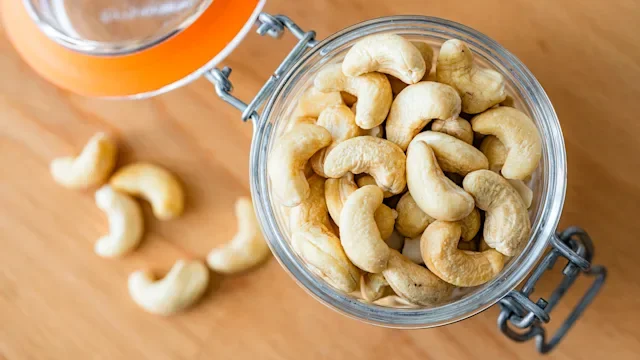Key takeaways:
Perimenopause is the period of time leading up to menopause, the end of menstrual periods. During perimenopause, hormone levels fluctuate. For some women, this causes symptoms, like hot flashes and insomnia.
Eating veggies and fruits, foods high in calcium, and protein-rich foods can help perimenopause symptoms. These foods may also decrease the risk of health conditions that can come along with these hormonal shifts.
Limiting alcohol, saturated fat, and added sugars may also help with perimenopause symptoms.
During perimenopause (the period of time leading up to menopause), your body begins to make less estrogen. For some women, this causes symptoms, like hot flashes, sleep problems, and weight gain. These hormone changes also increase your risk of developing health conditions, like heart disease, Type 2 diabetes, and osteoporosis.
Focusing on certain food groups may help perimenopause symptoms. And these foods may also reduce your risk of developing the chronic conditions associated with this stage of life.
Let’s take a look at some of the best foods for perimenopause.
Vegetables and fruit
The hormonal changes during perimenopause increase the risk of heart disease. But vegetables and fruits contain fiber, potassium, and antioxidants. These nutrients can reduce risk factors for heart disease, such as high blood pressure and high cholesterol.
Eating enough fruit and vegetables also supports weight management. This is important because weight gain is common in perimenopause. Fruit and vegetables are low in calories and filling, thanks to their fiber and high water content. This may help you consume fewer calories overall. And studies show that not eating enough vegetables and fruits leads to an increased risk of central obesity (excess fat around the waist) in perimenopausal women.
A good rule of thumb is to fill half your plate with vegetables and fruits at meals. Keep in mind that fresh vegetables aren’t the only way to go. Frozen and canned veggies are also excellent sources of nutrients.
Calcium-rich foods
During perimenopause and menopause, the risk of osteoporosis increases. Calcium helps to build strong bones and help prevent bone loss that can lead to osteoporosis.
Calcium also supports heart health by regulating heart rhythms and blood pressure levels.
Foods rich in calcium include:
Milk
Calcium-fortified milk alternatives (such as almond, oat, or soy beverage)
Cheese
Some nuts (such as almonds)
Some seeds (such as sesame)
Canned salmon or sardines (with bones)
Legumes (chickpeas, soybeans)
Foods made from soybean (like tofu)
Leafy greens (chard, arugula, kale)
Sleep troubles in perimenopause: It’s common to have trouble catching z’s during perimenopause. Three women share the sleep strategies that worked well for them.
Should you try hormone treatment? Learn about hormone therapy, and whether it may be a good choice for you to help manage perimenopause symptoms.
Hot flashes 101: Having hot flashes during perimenopause is extremely common. Learn what causes them, what they feel like, and options for treating them.
Note: It’s easier for the body to absorb calcium when it’s paired with vitamin D. Dairy foods, like milk and yogurt, provide this nutrient combo.
Quiz: Are you in perimenopause?
Whole grains
Whole grains provide a few different nutrients that can help during perimenopause, including:
Fiber: Fiber helps prevent rapid blood sugar spikes after eating. It does so by slowing the absorption of sugar into the bloodstream. This is important in perimenopause, since fluctuating hormones can also cause changes in blood sugar levels. Plus, fiber is filling, which supports weight management.
Magnesium: Magnesium is important for bone health and regulating blood sugar levels.
B vitamins: B vitamins help maintain energy levels. This is important since many people experience fatigue during perimenopause. And deficiency in B vitamins is linked to heart disease, stroke, and cognitive decline.
There are several ways to add more whole grains in your diet. Try:
Including oatmeal in your breakfast rotation
Replacing white rice and white pasta with whole grains, like quinoa or brown rice
Choosing bread and crackers made from whole grains, instead of refined grains
Protein-rich foods
During perimenopause, muscle mass and bone mass often decrease. Since protein is a building block for strong muscles and bones, it’s important to get enough protein.
Red meat is fine to eat once in a while, but it’s high in saturated fat (more on this below). So, most of the time, it’s better to choose proteins, like:
Fish
Lean poultry (such as chicken or turkey breast)
Legumes (chickpeas, lentils)
Nuts and seeds
Eggs
Dairy foods (yogurt, cheese)
Plant-based protein sources have the advantage of containing fiber. This helps with satiety (feeling of fullness), heart health, and blood sugar management. Plus, studies suggest that plant-based diets that include soybeans — such as edamame, tofu, and tempeh — may actually reduce hot flashes.
How much protein should you get each day? The recommended dietary allowance (RDA) is 0.8 g per kg of body weight per day. This translates to about 0.36 g per pound. For example, a 150-pound person should aim for 54 g of protein per day. But in perimenopause, it’s a good idea to increase your protein. Try to aim for about 25 to 30 g per meal.
Omega-3 fatty acids
Omega-3s are healthy dietary fats that have many functions in your body, including:
Helping to regulate the levels of fats in your blood
Controlling body-wide inflammation
Providing your cells with energy
Omega-3s are important to include in a perimenopause diet because they can help protect against heart disease. A small amount of research suggests they can help reduce night sweats, as well.
Foods high in omega-3s include:
Oily fish (salmon, tuna, sardines)
Walnuts
Plant oils (canola oil, flaxseed oil, soybean oil)
Foods to limit during perimenopause
Some foods can worsen perimenopause symptoms or contribute to the risk of chronic health conditions. Here are some foods to limit or avoid during perimenopause.
Alcohol
Having a daily drink increases the risk of osteoporosis, heart disease, and weight gain — and you already have a higher risk of getting each of these conditions during perimenopause. This applies to all types of alcohol, including beer, wine, and liquor.
Another reason to avoid alcohol in perimenopause is that it can disrupt sleep. And sleep problems are already an issue for an estimated 50% of perimenopausal women.
There’s no amount of alcohol that’s considered safe to drink. If you don’t drink alcohol, don’t start. If you do drink, “low risk” drinking is 1 to 2 drinks per week.
Saturated fat
Perimenopause increases your risk of heart disease. So, it’s important to limit your saturated fat intake from:
High-fat meats (like many cuts of red meat)
Processed meats (bacon, deli meat, hotdogs)
Full-fat cheese
Butter
Fast food (burgers, pizza)
Added sugars
Consuming high amounts of sugary foods — like soda, candy, and baked goods — can lead to weight gain. High amounts of added sugars also affects blood sugar levels and can increase the risk of heart disease.
The American Heart Association recommends that women limit added-sugar intake to 25 g (around 6 tsp) per day.
Fruits and vegetables contain natural sugars, not added sugars. Fruits and vegetables are good for you since their sugars come with nutrients that benefit your health.
Other lifestyle changes that can help
In addition to eating well, there are other lifestyle changes that help reduce perimenopause symptoms and decrease the risk of disease. These include:
Getting regular physical activity, including strength training
Quitting smoking
Getting enough sleep
Reducing stress as much as possible
Frequently asked questions
An ideal perimenopause diet emphasizes fruits and vegetables, calcium, protein, healthy fats, and whole grains. This eating pattern is sometimes called plant-based eating, the DASH diet, or the Mediterranean diet. The names vary, but the core principles behind each of these eating patterns are similar.
Eggs can absolutely be part of a healthy eating pattern. They’re high in protein, vitamins, and minerals. But keep in mind that context and your overall eating pattern matters more than any single food. For example, eating eggs with bacon and white toast regularly isn’t good for you. But eating eggs with whole grain bread, tomato, and spinach is.
Eating nutrient-rich, hydrating foods — including berries, leafy greens, and fatty fish — can help fight fatigue and give you energy. Nutrients to look for include magnesium, iron, and B vitamins. Caffeinated drinks may also help fight fatigue, since caffeine boosts alertness. But getting too much caffeine is linked with insomnia, which is a common symptom of perimenopause.
An ideal perimenopause diet emphasizes fruits and vegetables, calcium, protein, healthy fats, and whole grains. This eating pattern is sometimes called plant-based eating, the DASH diet, or the Mediterranean diet. The names vary, but the core principles behind each of these eating patterns are similar.
Eggs can absolutely be part of a healthy eating pattern. They’re high in protein, vitamins, and minerals. But keep in mind that context and your overall eating pattern matters more than any single food. For example, eating eggs with bacon and white toast regularly isn’t good for you. But eating eggs with whole grain bread, tomato, and spinach is.
Eating nutrient-rich, hydrating foods — including berries, leafy greens, and fatty fish — can help fight fatigue and give you energy. Nutrients to look for include magnesium, iron, and B vitamins. Caffeinated drinks may also help fight fatigue, since caffeine boosts alertness. But getting too much caffeine is linked with insomnia, which is a common symptom of perimenopause.
The bottom line
Perimenopause is a normal part of the life cycle. But the associated hormonal shifts can cause unpleasant symptoms and increase your risk for chronic conditions. The foods you eat can help. During perimenopause, emphasize fruits and vegetables, whole grains, protein, omega-3 fatty acids, and calcium. These food groups support bone health, heart health, and energy levels. They may also help with common perimenopause symptoms, like hot flashes and weight gain. Limit saturated fat, added sugars, and alcohol during perimenopause. These things can make symptoms worse and contribute to your risk of developing health conditions.

Why trust our experts?



References
American Heart Association. (2024). How much sugar is too much?
Barnard, N. D., et al. (2021). The Women's Study for the Alleviation of Vasomotor Symptoms (WAVS): A randomized, controlled trial of a plant-based diet and whole soybeans for postmenopausal women. Menopause.
Barrea, L., et al. (2021). Mediterranean diet as medical prescription in menopausal women with obesity: A practical guide for nutritionists. Critical Reviews in Food Science and Nutrition.
Bermingham, K. M., et al. (2022). Menopause is associated with postprandial metabolism, metabolic health and lifestyle: The ZOE PREDICT study. eBioMedicine.
Cabre, H. E., et al. (2024). Precision nutrition for management of cardiovascular disease risk during menopause. Lifestyle Genomics.
Canadian Centre on Substance Abuse and Addiction. (n.d.). Canada's guidance on alcohol and health.
Centers for Disease Control and Prevention. (2023). Healthy habits: Fruits and vegetables to manage weight.
Cheraghi, Z., et al. (2019). The effect of alcohol on osteoporosis: A systematic review and meta-analysis. Drug and Alcohol Dependence.
Cormick, G., et al. (2022). Extra calcium to prevent high blood pressure. Cochrane Database of Systematic Reviews.
Erdélyi, A., et al. (2023). The importance of nutrition in menopause and perimenopause — A review. Nutrients.
Huang, Y., et al. (2023). Dietary sugar consumption and health: Umbrella review. The BMJ.
Institute of Medicine (US) Committee to Review Dietary Reference Intakes for Vitamin D and Calcium. (2011). Overview of calcium. Dietary Reference Intakes for Calcium and Vitamin D. National Academies Press.
Kuller, L. H., et al. (2001). Women’s healthy lifestyle project: A randomized clinical trial: Results at 54 months. Circulation.
Let’s Talk Menopause. (n.d.). Insomnia.
Milart, P., et al. (2018). Selected vitamins and quality of life in menopausal women. Menopause Review.
Mohammady, M., et al. (2018). Effect of omega-3 supplements on vasomotor symptoms in menopausal women: A systematic review and meta-analysis. European Journal of Obstetrics, Gynecology, and Reproductive Biology.
North American Menopause Society. (2021). Management of osteoporosis in postmenopausal women: The 2021 position statement of The North American Menopause Society. Menopause.
North American Menopause Society. (2021). The role of calcium in peri- and postmenopausal women: 2006 position statement of The North American Menopause Society. Menopause.
Office of Dietary Supplements. (2025). Vitamin B12: Fact sheet for health professionals. National Institutes of Health.
Stevenson, J. C., et al. (2019). Cardiovascular risk in perimenopausal women. Current Vascular Pharmacology.
Su, J., et al. (2022). Does the association of sedentary time or fruit/vegetable intake with central obesity depend on menopausal status among women? International Journal of Environmental Research and Public Health.














